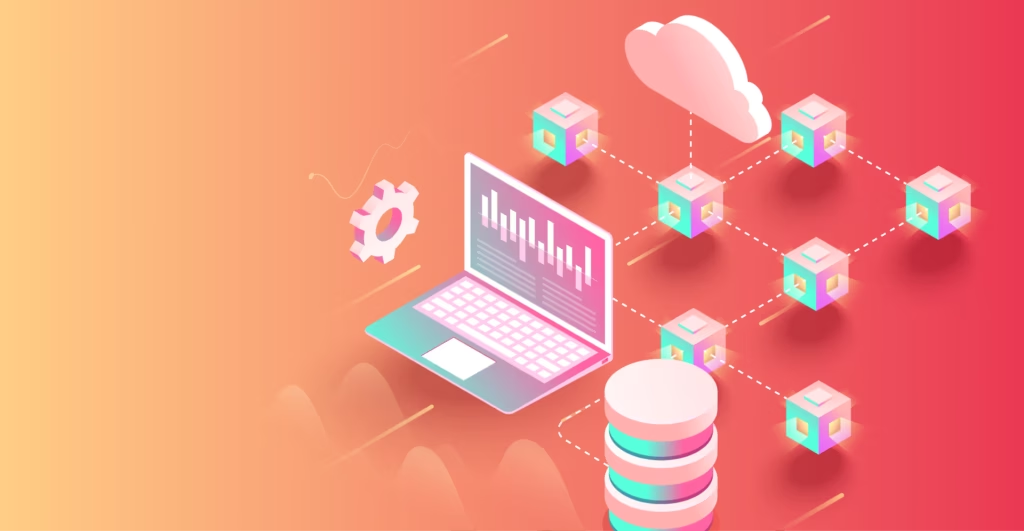Over 56% of organizations use Microsoft Azure’s cloud services, which form a significant part of many budgets and expenses. Due to the heavy reliance on Azure, costs are also higher. Moreover, many users don’t understand Azure services and pay for ones they don’t need.
Fortunately, one strategy solves this concern: Azure Cost Optimization. It’s a process of understanding, managing, and controlling Azure resources through tools and practices. With this optimization, companies can ensure efficient Azure resource usage and spending.
As companies migrate to and rely on Azure, understanding how to use it efficiently becomes essential. This article comprehensively looks at Azure cost optimization, from best practices to tools.
Key Takeaways
- Azure Cost Optimization is the process that promotes better understanding, management, and control of Azure resources to boost usage efficiency and reduce costs.
- Using the right tools and implementing specific strategies are essential to maximizing Azure resources and saving on costs.
- Microsoft Azure provides an array of native tools to help optimize costs. While most are free, some incur more charges that lead to overspending.
- Tools like Edge Delta offer a more cost-effective approach to reducing Azure costs. It also offers comprehensive observability features with 90% lower logging costs than the native Azure Monitor.
6 Azure Cost Optimization Techniques to Implement
Azure costs can escalate without proper management as businesses scale their cloud infrastructure. This problem can affect the budget, leading to lower profits and unnecessary expenses. Azure cost optimization solves this issue by providing several benefits:
- Better control of expenditures: Azure cost optimization involves several strategies that help businesses understand Azure resources. As a result, it helps teams gain control over Azure services.
- Predict future expenses: Azure cost optimization can reduce unnecessary costs and predict future expenses. It offers specific tools that provide data-driven predictions based on current resource usage. With this feature, businesses can have a solid basis for financial planning.
- Enhanced operational efficiency: Azure cost optimization also ensures efficient resource use. As a result, businesses can discard unused services and concentrate resources on more valuable tasks. Enhancing operational efficiency also leads to better productivity and performance.
Azure cost optimization’s success depends on how you use several tools and strategies. Thus, to maximize Azure cost optimization, consider following these strategies and practices:
1. Right-Size Azure Resources
Right-sizing Azure resources is a simple yet powerful strategy to optimize Azure costs. In this process, you match your business requirements to Azure resources.
To right-size Azure resources, you must learn about your resource usage. This step will help you detect underutilized resources and downsize them. It will also let you concentrate more resources on heavy workloads.
Note:
Always check if your resources are suitable for your needs. This tip can reduce costs and help you make the most of your money.
2. Use Azure Budgets and Alerts
Azure Budgets and Alerts sets a spending budget and sends an alert when you reach or exceed your budget. This proactive optimization practice effectively allocates funds and prevents unexpected fees. The alerts also notify you when you’re about to reach your allotted budget. You can adjust your usage or increase your budget.
Azure Budgets and Alerts are highly customizable tools that let you create several budgets for various purposes. You can even use them with Azure Logic Apps to automate responses based on alerts.
3. Implement Tagging and Resource Organization
With Azure tagging and resource organization, you can organize and track your resources based on your workload.
Tagging Azure resources provides granular insight into resource usage. Based on high-cost resources, you can make informed cost-optimization decisions. A resource organization simplifies the management and governance of resources. With this practice, you can detect redundant resources and remove them to save costs.
4. Optimize Azure Storage Tiers
Azure offers three storage tiers you can leverage to optimize costs: Hot, Cool, and Archive. Here’s how to optimize costs for each tier:
- Hot: Low latency storage you can use to store data you always need
- Cool: Low storage cost for data you seldom need
- Archive: Cheapest storage cost for data you rarely access but need for long-term
Besides these storage tiers, Azure also offers automated tiering, like life cycle management policies and blob-level tiering. These options work well when optimizing storage costs based on your data’s lifecycle.
5. Leverage Azure Hybrid Benefit
This cost optimization strategy allows BYOL (Bring-Your-Own-License). It works well with existing Microsoft users since it removes significant costs from licenses.
Azure Hybrid Benefit lets you use Windows Server and SQL Server workloads on Azure at a reduced rate, saving you substantially over pay-per-use.
Only Azure offers these benefits, allowing businesses to keep existing Microsoft investments while optimizing their cloud costs. Besides Microsoft software, Azure Hybrid Benefit also supports Oracle and Red Hat software.
6. Review and Optimize Azure Subscriptions
This practice monitors Azure usage and costs, identifies inefficiencies, and adjusts accordingly. It involves tools like Azure Cost Management and Azure Advisor that help you understand your Azure spending and optimize costs.
You can also use the Azure Cost Management Power BI App to analyze and report on your Azure spending. Its powerful visuals and filters give you deeper insight into your costs.
Azure Cost Optimization Checklist
Optimizing Azure costs can be overwhelming, especially for new Azure users. This Azure Cost Optimization Checklist can help you complete every task to optimize Azure costs.
✅ Understand Azure and Pricing and Offers
- Become familiar with Azure Pricing Models
- Check out Azure Service Pricing
- Take advantage of the Azure Pricing Calculator
✅ Set Up Cost Management Tools
- Utilize Azure Cost Management
- Set up Budgets and Policies
- Use Azure Advisor
✅ Optimize Resource Usage and Costs
- Assess Underutilized Resources
- Enhance Resource Sizes & Leverage Reserved Instances
- Enable Autoscaling
✅ Review and Optimize Storage Costs
- Maximize Storage Performance and Costs
- Maintain the Azure Blob Storage lifecycle
✅ Manage Network Costs
- Use Network Watcher
- Improve Data transfer
- Utilize Azure Content Delivery Network (CDN)
✅ Utilize Cost-Effective Databases
- Choose the Right Database Service and Tier
- Keep track of Database Performance
✅ Implement Monitoring and Alerts
- Configure Cost Alerts
- Analyze Cost Reports and Recommendations
✅ Apply Tags for Cost Allocation
- Manage resources with Azure tags
- Add billing tags
- Organize and assign costs using tag inheritance
✅ Improve Team Awareness of Azure Costs
- Describe cost management in Azure
✅ Regular Cost Review Meetings
- Plan Monthly or Quarterly Cost Reviews
5 Main Factors That Contribute to Azure Costs
Several factors affect Azure service expenses, and it’s crucial to understand each one to know which aspects you need to look out for. Here are some of them:
1. Pricing Models
Azure’s pricing models let you choose the best option depending on your workload requirements. Consider the following insights to find the best model for your needs:
| Pricing Model | Benefits | Trade-offs |
|---|---|---|
| Pay-per-use | Best Flexibility in Pricing | Most Expensive out of all Options |
| Spot Instances | Spare Cloud Capacity for 90% Lower Costs | Interruptible with only 30 seconds of advanced notice |
| Reserved Instances | Up to 72% Lower Azure Resources | Long Term Commitment of 1 to 3 Years |
| Hybrid Benefit | Substantial Discount with BYOL (Bring-Your-Own-License) | Limited Uptime Management |
2. Resource Type
Azure costs also depend on the type of resource you use. Thus, the meter that tracks your usage uses a different pricing point for every resource type.
Each meter tracks usage in billable units. These are billed to your account every billing period, and each chargeable unit is billed at a different rate.
3. Service Type
Your Azure billing also depends on the services you use, which are either:
- Web Direct
- Cloud Solution Provider
- Enterprise
Further, each service can include usage allowances that add to the costs.
4. Location
The cost of Azure services, products, and resources varies by location. It can be more expensive or cheaper depending on popularity, demand, and infrastructure costs.
You can build a solution in more affordable locations. However, when resources are spread around the globe, you’ll need to transfer data. Taking advantage of cheaper locations can result in offset costs, so calculate before you leverage.
5. Billing Zones
Data transfer inbound is usually free. However, pricing for outbound transfers depends on the Billing Zone. These zones refer to Azure regions created for billing:
| Zone | Listed Countries or Areas |
|---|---|
| Zone 1 | USA, UK, Canada, and Europe |
| DE Zone 1 | Germany |
| Zone 2 | Japan, Australia, Korea, and India |
| Zone 3 | Brazil |
Most zones don’t charge for the initial 5GB outbound per month. After that, you’re charged per GB.
Note
A billing zone is different from an availability zone. Zones are used in Azure for billing only, and Availability Zones are used for Azure’s data center protection.
Native Azure Cost Optimization Tools to Use
Azure users have access to several native and free tools. Tools like these help you identify savings opportunities and implement cost management best practices.
Here’s an overview of what they offer and how they help reduce Azure costs:
| Tool | What it offers | How it optimizes Azure costs |
|---|---|---|
| Azure Cost Management and Billing | Detailed Azure spending insights | Notifying before reaching budget limits and predicting future costs |
| Azure Advisor | Personal suggestions based on configuration and use | Providing recommendations with reserved instances |
| Azure Pricing Calculator | Estimated cost of Azure services | Planning Azure migration or adding a new workload |
| Azure Monitor | Insights to performance, network, and infrastructure | Performance monitoring and resource usage tracking |
| Azure Resource Graph | Unified view of resources in all subscriptions | Detecting unused and underutilized resources |
While using native tools to optimize Azure costs seems the most convenient, they can incur extra charges. Fortunately, tools like Edge Delta offer a better, cost-effective solution.
How to Implement Azure Cost Optimization with Edge Delta
Edge Delta is a platform offering a cost-effective observability solution for Azure users. With this tool, you can enjoy:
- Effortless and affordable monitoring solution for your distributed Azure environments.
- Analyze Azure logs and metrics at any scale
- Automatically detect anomalies, even without defining alerts
How Edge Delta Reduces Azure Costs Better Than Azure Monitor
Compared to the native Azure Monitor, Edge Delta reduces Azure logging costs by up to 90%. Moreover, it optimizes Azure data by pre-processing logs as they’re generated. The tool also ingests the most valuable metrics to reduce time-series ingestion by over 90%.
Edge Delta offers three main advantages over Azure Monitor:
- Distributed Architecture: Edge Delta pushes compute near the source and processes telemetry upstream to promote cost optimization.
- Lower Costs: Edge Delta offers 90% lower costs than Azure Monitor by charging only $0.20/GB when ingesting logs and metrics.
- Automation: Edge Delta provides out-of-the-box observability solutions with AI and ML, with automated anomaly detection and pre-built dashboards.
Edge Delta Supports Integrations With Azure Services
This tool provides pre-built integrations with several Azure services, such as:
- Azure VMs and Managed Kubernetes Service: Seamless collection and pre-processing of telemetry data
- Azure Blob: Long-term storage of telemetry data
- Azure Functions: Triggering serverless functions
Conclusion
As more businesses migrate to the cloud using providers like Azure, their expenses will likely increase. While some users know how to maximize their spending, most spend on resources they don’t need. Therefore, understanding Azure Cost Optimization becomes as crucial as managing Azure infrastructures per se.
With the right tools and practices, companies can efficiently control Azure resource usage and avoid unnecessary expenses. While native tools are convenient, platforms like Edge Delta can offer a more practical approach to optimize Azure costs.
Azure Cost Optimization FAQs
What are the three benefits of using Azure cost management?
With Azure’s cost management, businesses can reduce costs, detect underutilized resources, and discard waste.
What is the Azure cost optimization assessment?
Azure cost optimization assessment allows companies to see how they use Azure resources. It also helps companies have a roadmap to maximize services and reduce costs.
What are the 3 pricing models of Azure?
Azure services have three pricing models: Pay-As-You-Go, Spot Instances, and Reserved Instances. These tiers apply to all Azure-related services. Azure also offers a hybrid benefit that allows BYOL from on-premise MS deployments.
Source






